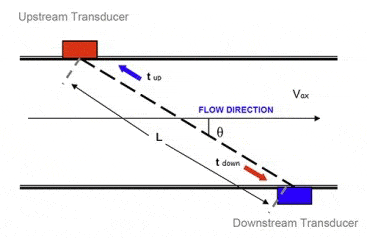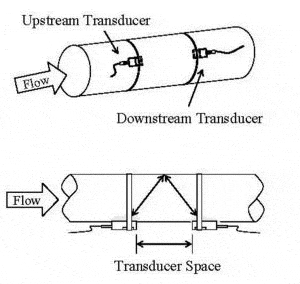Ultrasonic flowmeter is a kind of velocity flowmeter which uses ultrasonic pulse to measure fluid flow.
Using advanced multi-pulse technology, digital signal processing technology and error correction technology, the flowmeter is more suitable for the industrial field environment, and the measurement is more convenient, economical and accurate.
It can be widely used in petroleum, chemical industry, metallurgy, electric power and other fields. At present, ultrasonic flowmeter is paid more and more attention by enterprises.
In the process of using ultrasonic flowmeter, we should pay attention to the following points:
1. choose the right product
Correct selection is the basis of ensuring the normal operation of ultrasonic flowmeter. If the selected product does not match the usage scenario, the traffic cannot be measured, or the user may not use it. Therefore, if there is any demand, you can consult SUNCENT staff in official website or by telephone to provide relevant information such as usage scenario, measured liquid, pipe diameter, size and material, etc., and SUNCENT staff will give a suitable model to meet the demand.
2. Install products reasonably
Improper installation of sensors is the main reason why ultrasonic flowmeter can't work normally. Location determination and mode selection are the first two issues to be considered when installing sensors.
When determining the installation position, in addition to ensuring enough upstream and downstream straight pipe sections, it is also necessary to keep the sensor away from the inverter, electric welding machine and other places that pollute the power supply, otherwise the measurement of the sensor will be affected. SUNCENT ultrasonic flowmeters all use time difference measurement, and there are two installation methods: V installation and Z installation.
Generally, when the pipe diameter is less than 200mm, the installation by V method is simpler and more convenient.
When the pipe diameter is larger than 200mm, it is installed by Z method, which is more accurate and stable to capture the measurement signal.
If the measured data is not very good when using V method to install, you can use Z method to install.
The practice shows that the ultrasonic flowmeter with the sensor installed by Z method has good signal strength and good measurement stability.
Installation of ultrasonic flowmeter by V method


Figure 1:Installation of flowmeter sensor by Z method
Figure 2:Installation of flowmeter sensor by V method
3. Verify and correct in time
If there are a large number of fixed ultrasonic flowmeters installed on site, users can purchase or lease SUNCENT portable ultrasonic flowmeters to verify field instruments.
First, adhere to one-by-one calibration, that is, when installing and debugging, check each newly installed ultrasonic flowmeter to ensure the normal operation of the host, good installation of sensors and accurate measurement data;
Second, when the measurement data of ultrasonic flowmeter is abrupt and inaccurate, the portable ultrasonic flowmeter shall be used for nuclear calibration in time to find out the cause of sudden change in flow rate, make clear what causes the instrument failure, and analyze and solve it in time.
4. Regular maintenance
Compared with other flowmeters, ultrasonic flowmeters have relatively less maintenance. For ultrasonic flowmeter with external clamp sensor, there is no need to break the pipe, so there will be no loss of water pressure and no water leakage after installation. It is only necessary to regularly check whether the transducer is loose, and whether the coupling agent between the sensor and the pipeline is good (SUNCENT has upgraded to coupling paste, which will not pollute the installation scene and lower maintenance cost).
Plug-in ultrasonic flowmeter, regularly clean impurities, scale and water leakage on the probe. In case of pipe section ultrasonic flowmeter, check the flange connection between flowmeter and pipeline, and consider the temperature and humidity on site.
5. Troubleshooting
(1) no signal
First, you need to disconnect and reconnect the sensor and host. Second, check whether there is water in the pipeline or whether the installation position is reasonable.
(2) Insufficient signal strength
Check whether the connecting line between the host and the sensor and the contact position between the sensor and the pipeline are clean and clean, so as to ensure that there is no interference from sundries. Secondly, check whether the sensor position is correct and readjust the sensor installation position.
(3) The instantaneous flow rate is stable, but the actual value is too large.
Check the installation position spacing, whether the internal parameters of the host are set correctly, and retest after adjustment. If the same situation exists, adjust the installation position of the sensors. If not, the sensors may fail, and replace a pair of sensors.
(4) The instantaneous flow rate fluctuates greatly
First of all, the fluid fluctuation may be caused by the interference of pump/elbow in the installation position, which leads to unstable data measurement, so it is necessary to consider replacing the sensor position.
(5) Inconsistent instantaneous and cumulative flow
Check whether the host data is reset and cleared. If this happens after reset, it is necessary to consider whether the host is faulty and replace the host.
Previous news recommendation:
More product details:

